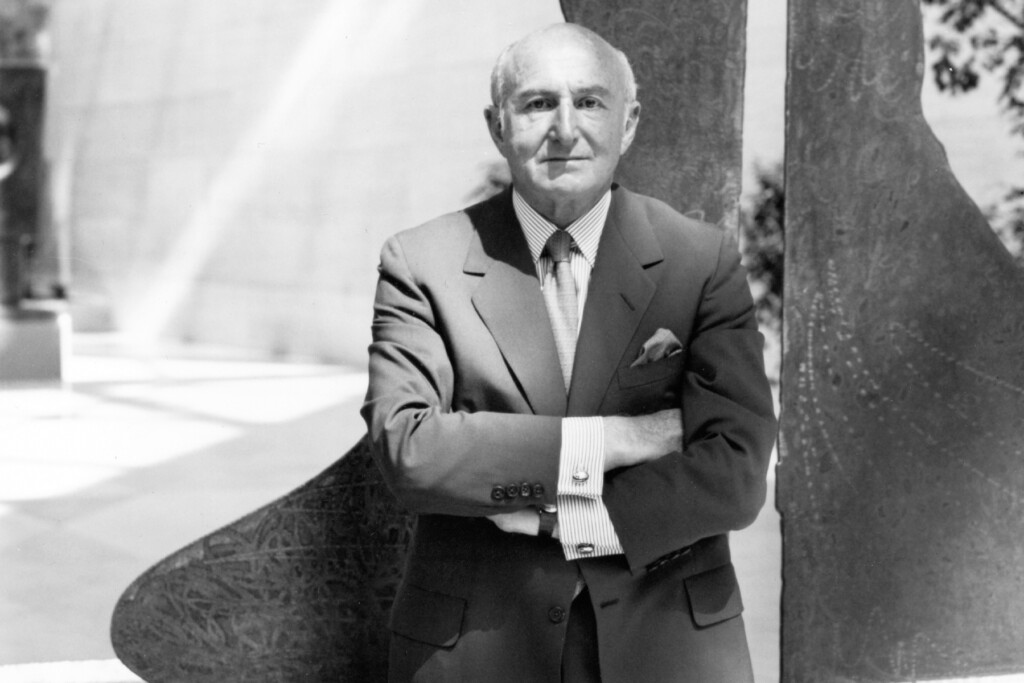Raymond Nasher was born in Boston, Massachusetts, in 1921. He grew up an only child to European parents who emigrated to Boston in his early years. He inherited an appreciation for art from his parents, who took him to various museums and galleries monthly during his childhood, instilling a love of quality art in him at a young age.
A few years after graduating from Duke University in 1943, Nasher met his wife, Patsy Rabinowitz, a Dallas native. While studying for his master’s degree in economics at Boston University, he met Patsy, a Smith College student, and they bonded over a shared interest in art and politics. After meeting in 1948, they married a year later and eventually moved to her hometown of Dallas, Texas, in 1950, where they raised three daughters.
Artists by nature, the couple began collaborating on a collection of various art pieces and sculptures while Nasher’s real estate career took flight. Their art collection began with small pre-Colombian antiquities inspired by their trip to Mexico in 1950.
By the 1960s, the Raymond and Patsy Nasher Collection held significant modern sculpture works, including their first major piece, a Jean Arp bronze sculpture, “Torso With Buds,” that Patsy gifted Ray in 1967 for his birthday.
Simultaneously, Nasher’s career in real estate was expanding from residential to commercial work across the Dallas area. In 1965, he opened the well-known NorthPark Center, which he developed with sculpture in mind, building spaces for art in the design and showcasing works from sculptors like Beverly Pepper and Henry Moore.
Along with ardent art enthusiasm, Nasher spent a lot of his time focusing on business, politics, and civic duties. In 1964, he chaired the National Commission of Urban Development. A year later, he was made an executive director of the White House Conference on International Cooperation, and he eventually served as a United States delegate to the General Assembly of the United Nations.
During his split time between Washington D.C. and Dallas, his wife Patsy oversaw contributing to their art collection as she traveled to meet artists. However, after her tragic death from cancer in 1988, Nasher continued to build the collection on his own, adding distinguishing works by Picasso, Matisse and others.
By the late 1980s, the Nasher Collection had acquired international recognition, and various exhibitions presented the collection, including the Dallas Museum of Art, the National Gallery of Art in Washington, D.C., as well as museums across Spain, Italy, and Israel.
While museums in New York, London, San Francisco, and Washington all scrambled to win the works, Nasher chose Dallas as the home for his world-renowned private art collection. Spending $70 million of his own fortune, Nasher built the Nasher Sculpture Center, a 55,000-square-foot museum and sculpture garden in downtown Dallas, which opened in 2003.
Nasher expanded his generosity beyond Dallas, gifting $7.5 million to establish the Nasher Museum of Art at his alma mater, Duke University. He also regularly supported the sculpture garden named after him at the Peggy Guggenheim Collection in Venice.
Regarding their world-renowned sculpture and art collection, Nasher said in a 1997 interview:
“The question of why they turned out to be the masterpieces of the 20th century is a very good question and one that is difficult to answer. For this reason, my wife and I determined that the only art that we would purchase would be things that brought a great sense of love and interest intellectually, or aesthetically, to our being—to our soul.”







